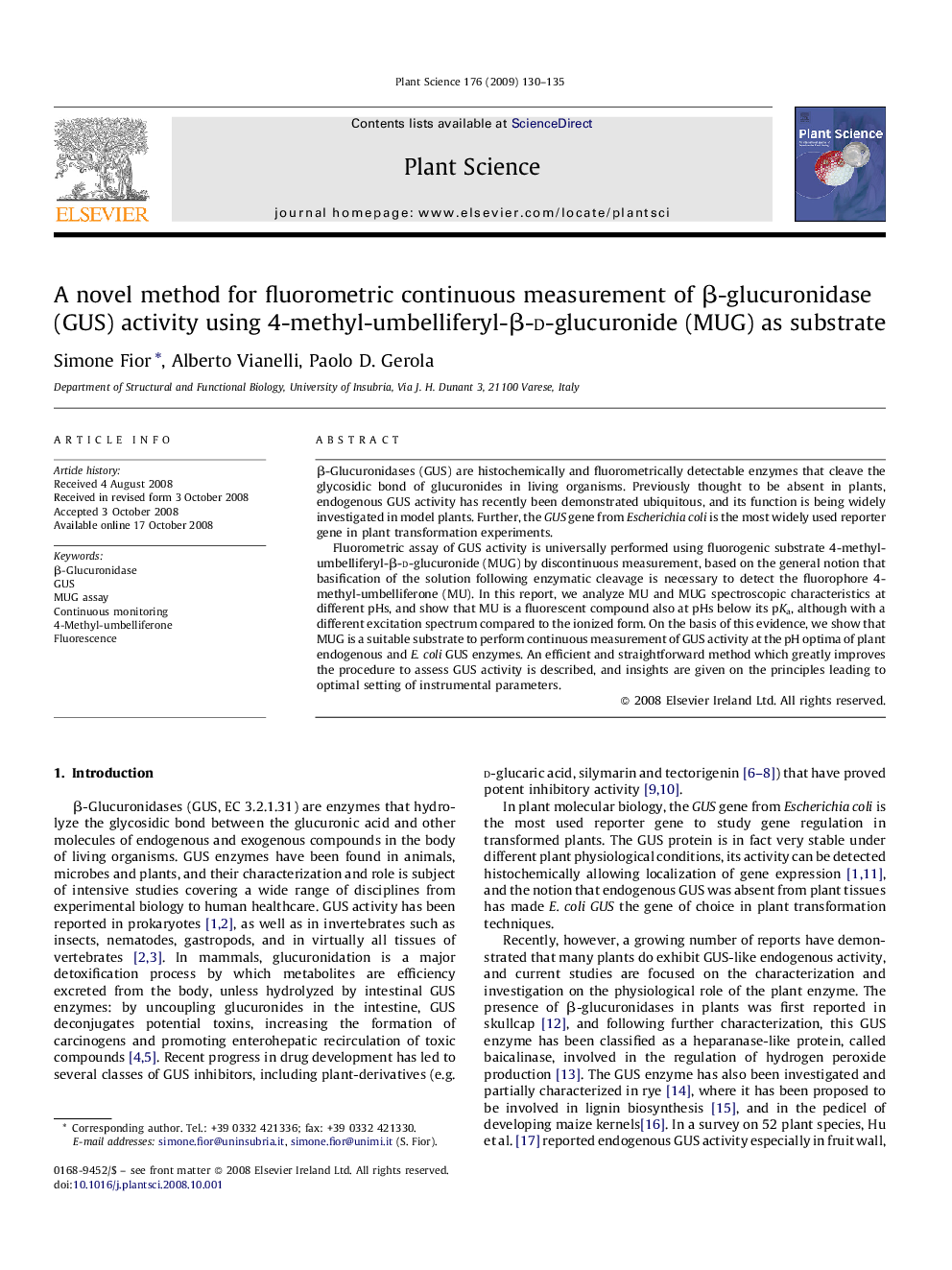| Article ID | Journal | Published Year | Pages | File Type |
|---|---|---|---|---|
| 2018042 | Plant Science | 2009 | 6 Pages |
β-Glucuronidases (GUS) are histochemically and fluorometrically detectable enzymes that cleave the glycosidic bond of glucuronides in living organisms. Previously thought to be absent in plants, endogenous GUS activity has recently been demonstrated ubiquitous, and its function is being widely investigated in model plants. Further, the GUS gene from Escherichia coli is the most widely used reporter gene in plant transformation experiments.Fluorometric assay of GUS activity is universally performed using fluorogenic substrate 4-methyl-umbelliferyl-β-d-glucuronide (MUG) by discontinuous measurement, based on the general notion that basification of the solution following enzymatic cleavage is necessary to detect the fluorophore 4-methyl-umbelliferone (MU). In this report, we analyze MU and MUG spectroscopic characteristics at different pHs, and show that MU is a fluorescent compound also at pHs below its pKa, although with a different excitation spectrum compared to the ionized form. On the basis of this evidence, we show that MUG is a suitable substrate to perform continuous measurement of GUS activity at the pH optima of plant endogenous and E. coli GUS enzymes. An efficient and straightforward method which greatly improves the procedure to assess GUS activity is described, and insights are given on the principles leading to optimal setting of instrumental parameters.
